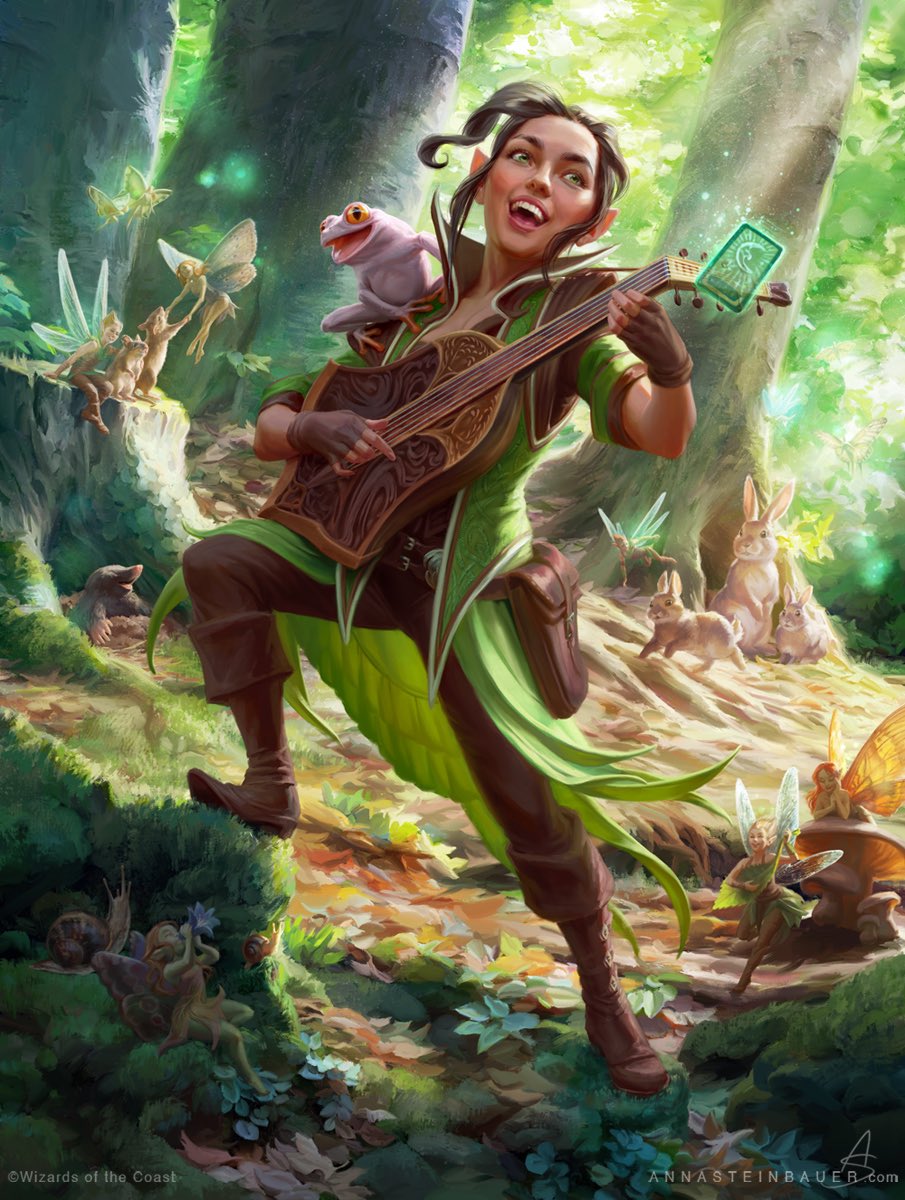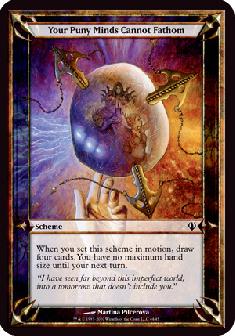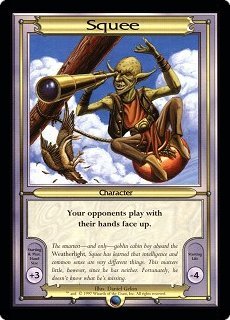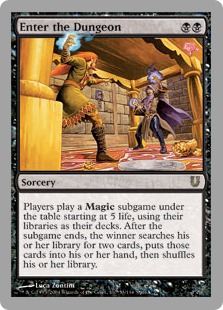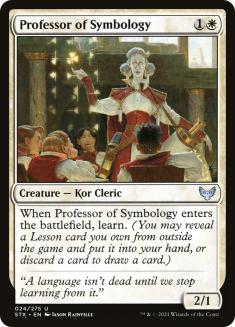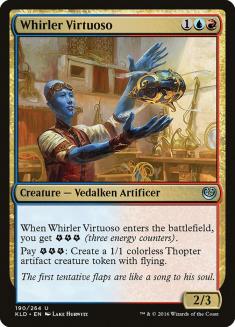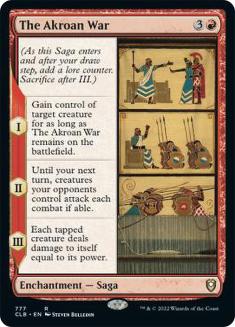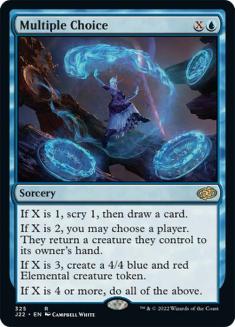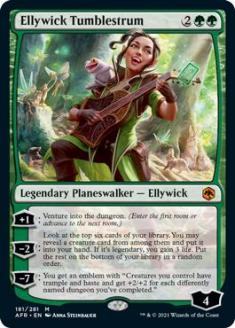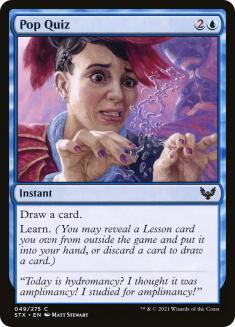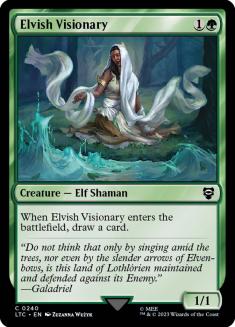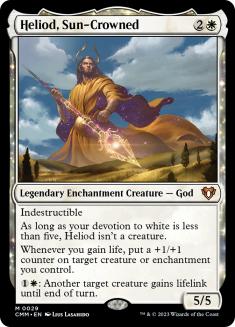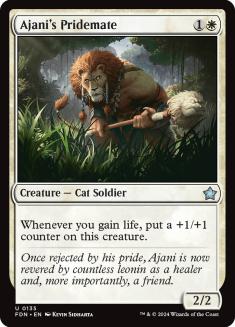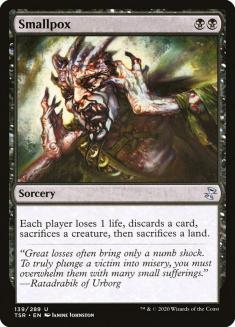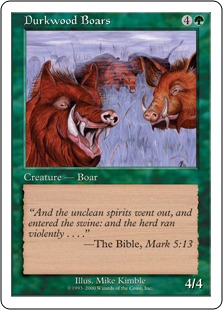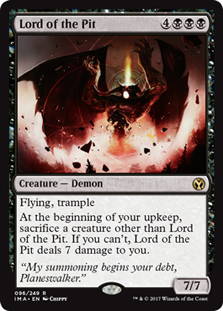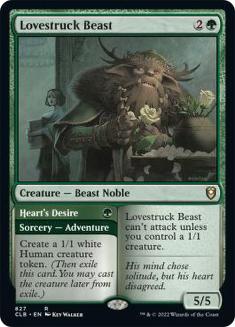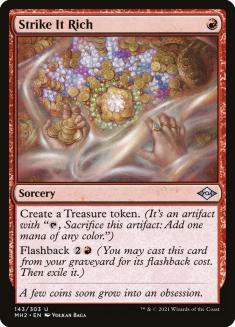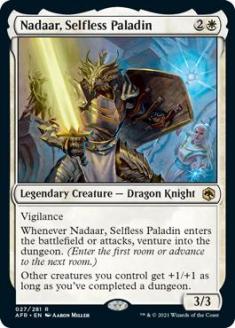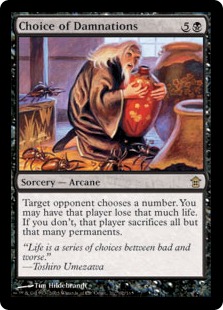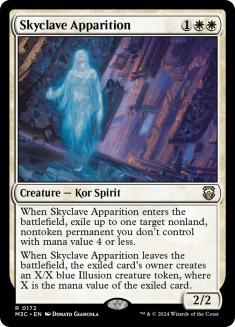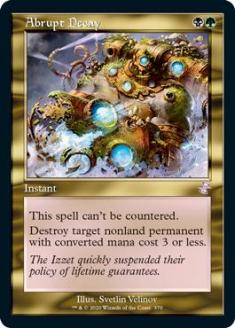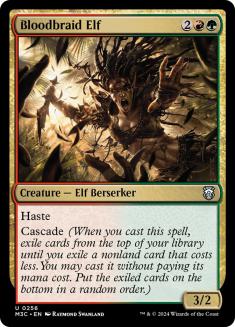Uh… okay then.
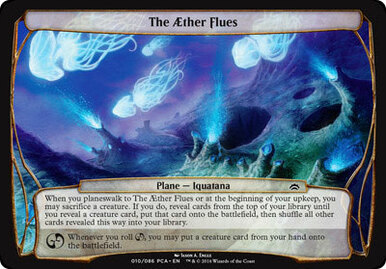
These are not just arbitrary, rarely used game pieces that jam up your card search engines.
You’re actually going to have to play matches of Limited, Constructed, and maybe even Historic or Modern where players venture into Dungeons.
So what the hell does that actually mean? Okay, now to use a classic Michael Jacob aka Darkest_Mage line:
I know what a Dungeon does, but what does it do?
Bulbasaur, Charmander, Squirtle?
While the concept of adding a mini-Cribbage board to your game of Magic might sound weird…. okay, it’s just weird.
I tried to draw comparisons to learn and Lesson, to energy, to Sagas or planeswalkers, and none of them are quite right.
They certainly aren’t companions, even if Justin was tweeting meme takes here.
In all the failed examples I listed, there tend to be a ton of choices and that is the core of Dungeons. While Dungeons do give you some choices down the line, the most important choice is the first one. Which Dungeon do you enter?
Dungeon of the Mad Mage
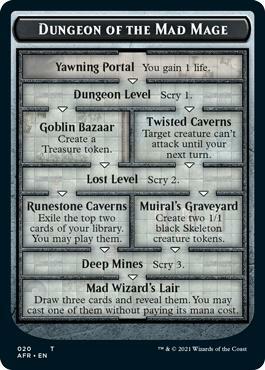
It’s best to talk about the Dungeons in reverse order of complexity, and that’s starting with the longest.
If you select Dungeon of the Mad Mage, you’re making a bet on the game going long. The value over replacement Dungeon in this one is all backloaded into the last levels: five, six, and seven. Those are after the point the other two Dungeons would end, but unless your cards have text about completing Dungeons, who cares? There’s no inherent value in completing a Dungeon, so who cares whether you loop back to the top of the average one or dive deeper for real treasures at that point?
The real question with Dungeon of the Mad Mage is how often can you expect to venture more than four times in a game and not just win because you had a permanent take five or more game actions. The early example of Ellywick Tumblestrum is certainly going to ultimate before the seventh venture, so my guess is you’re going to fuel Dungeon of the Mad Mage with more incidental value. If all your removal spells are Murder that ventures or you get a Pop Quiz or Jace’s Scrutiny equivalent that ventures, eventually your deck reaches the end goal of drawing three cards with a bonus and that should be enough to take home the game.
Or, if you know a matchup is going to trend towards attrition, you can move in early on Dungeon of the Mad Mage and assume the game will be a race to complete it and overwhelm the other player in card advantage.
One thing to note across all the Dungeons: I would label the first and probably even second levels of each Dungeon as consistent things to trigger. Dungeon of the Mad Mage is an assured lifegain trigger at basically no cost if you’re playing Heliod, Sun-Crowned or a similar card. If a scry or life loss synergy pops up in a later set, remember the same applies for the other Dungeons.
Tomb of Annihilation
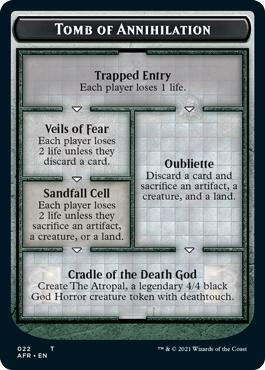
If Dungeon of the Mad Mage was the long-game Dungeon, Tomb of Annihilation is the short-game one. You can just look at the locked-in trigger and see how it gives a boost of “haste” damage to whatever you venture with, and then realize down the line is more of the same.
I can’t really imagine using the shortcut on this card in many games. The cost is so extreme unless you have nothing but lands and topdeck a venture card, or you get something game-winning for completing any Dungeon and you’re racing to a finish.
The normal pathway through the Tomb being punisher cards means I would not expect much value from it. If you’re really ahead early you get a bit of full-court press advantage where the all of your opponent’s resources are important, and many decks can turn the discard and sacrifice parity of the ability into an upside, but the reverse could easily be true, where if you end up behind or are playing against a graveyard strategy, the entire Dungeon could be a liability.
The final payout is certainly worth the uncertainty, but it is a little worse than it looks. Durkwood Boars is not the usual size where deathtouch matters, but a free 4/4 is a free 4/4.
This brings us to the real issue with Tomb of Annihilation: you can trap yourself in the Tomb. Once you venture into a Dungeon, the only way out is to go down and through. You should only enter Tomb of Annihilation if you’re ahead now and expect to remain ahead later. Otherwise you run the risk of your venture cards forcing you to take on disadvantageous triggers from the Tomb. You will eventually get out of the encounter with a 4/4 Horror God, but that assumes you even live that long or don’t just die right after.
At least until the comically oversized Adventure creatures leave Standard, I would file Tomb of Annihilation away as a matchup-specific Dungeon call.
Lost Mine of Phandelver
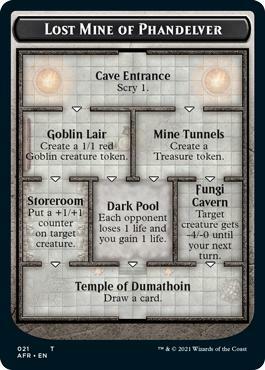
The most basic Dungeon is Lost Mine of Phandelver. You lock in some decent value at each step and have a small amount of choice, but there isn’t a big end payoff. If you complete the Dungeon, you get about a Phyrexian Rager of value via a scry, a 1/1 Goblin, a +1/+1 counter, and a card draw. I’ll take it, but I’m not building my deck to really rush my way there.
The one interesting part of Lost Mine is that it gives you a quick route to a Treasure mana boost. I was all about Magda, Brazen Outcast earlier this year, and the big issue with that card has always been that it’s a Goblin Piker when you aren’t looking for the mana boost. With Lost Mine, there’s no opportunity cost. You sequence to a Treasure when you want it, and every other time you go down the Phyrexian Rager road.
After initial review of the three options, it seems like the biggest choice with Dungeons is whether you enter Dungeon of the Mad Mage or Lost Mine of Phandelver when the choice presents itself early in a midrange matchup. The decision about Tomb of Annihilation should be fairly obvious: how often will the game end before your opponent can start killing you?
So between the normal-value Dungeons, do you get greedy and go for big value later or play it safe and get several cards less of value if the game continue on?
How easy is it to venture in your deck?
If you can reliably get the full clear of Mad Mage, it really isn’t a question. You can view Lost Mine as your Environmental Sciences, where if you need the immediate scry or Treasure to keep your mana going you choose the low-value Dungeon but otherwise go big. And if you aren’t reliably completing Mad Mage, why would you choose it? Some of this certainly changes if an early Goblin token holds off significant pressure in the matchup, but most of the other utility is about the same until you get to the bonus rounds of Mad Mage relative to restarting Lost Mine.
One thing to note about the Mad Mage versus Lost Mine decision is that both are paying you off in random accumulated value. If you want a clean linear progression towards a singular goal, stay in the Tomb of Annihilation.
Since these cards are about random value and playing a longer game, or even really longer with Dungeon of the Mad Mage, this all points to an attrition-based strategy.
Wait, didn’t Sam Black say Elvish Visionary points towards a wider strategy?
Yes, but Elvish Visionary is consistent. Dungeons really aren’t. Reliably venturing is a lot closer to drawing an extra card or fraction of a card a turn, and whenever you have a personal Howling Mine the best thing to do is reduce your opponent to nothing. It’s very possible that if your opponent does stuff unopposed, they can bypass your raw card advantage and win. Think Embercleave, Emergent Ultimatum, even more normal stuff that wasn’t printed in the 2019-2020 broken cards wave. If you’re getting ahead further and further each turn and use that to chip away at your opponent’s resources though, then they will be unable to end the game and you will keep going on and pulling further and further ahead with time.
In another stretch of a comparison, you can also model these cards closer to Bloodbraid Elf than Elvish Visionary. Nadaar is worth a card by itself, and it provides more tangible value without a mana cost. Or think about it like any token-generating planeswalker. Once you reach those points of getting a card up front and getting more value without cost, you see time and time again the attrition plans are where it’s at to support your one-shot or continuous value.
Since this obviously depends on the specifics of the venture cards, let’s talk about the ones we have seen so far.
The Venture Cards
Another good framing idea: the Dungeons don’t actually do anything by themselves. They are just the bonus text boxes of the actual cards with venture.
With so little of the set revealed, we don’t know anywhere close to the full roster of venture cards, but with a high-profile rare and planeswalker revealed we still have a lot to discuss.
Both Nadaar, Selfless Paladin and Ellywick Tumbstrum point to a world where accumulating seven ventures in a game is not the norm, and where in turn Lost Mine of Phandelver is the most-ventured Dungeon. Attacking with a vanilla 3/3 or activating a planeswalker seven times is going to win you the game through other means.
The next level implication of this is that Dungeon of the Mad Mage is going to be the linear venture reward. Like I said before, watch the efficiently costed venture spells to see if you can build a deck that just ventures one to two times a turn.
Ellywick Tumblestrum points significantly more towards Lost Mine of Phandelver than Tomb of Annihilation. If I were trying to kill my opponent with a green four-drop, it would be Questing Beast or another creature with power and toughness.
So how good is the Lost Mine rotation of abilities as a planeswalker +1 ability? Not too bad. Scry 1 is weak and the first Ellywick +1 each game will be underwhelming, but either token is great, a +1/+1 counter isn’t bad, and the eventual “draw a card” is very solid. I want to specifically shout out the -4/-0 of Fungi Cavern as being a really powerful planeswalker +1, and I’m guessing Goblin Lair was split off from it to prevent Ellywick from just chaining off self-protection abilities.
That all said, the sum of those abilities is merely solid and not phenomenal. The biggest payoff is a +1 that would belong on a five-drop planeswalker. The upside of the +1 being marginal, the low power of Ellywick’s -2 ability, and the fact that Ellywick being your first venture being way below curve point towards her being a top-end venture card in a more linear venture deck. Either you’re going to be using Ellywick to rapidly complete Dungeons for some payoff, or you’re using her as an easy way to get a couple of levels deeper into Dungeon of the Mad Mage.
If the first case of Dungeon completion is more likely, I’m expecting decks to play one or two Ellywicks since she’s more of a nice to have to run away with games you’re already winning. If it’s the latter Mad Mage plan, I would expect more copies of Ellywick since she will likely be one of the more resilient and reliable ways to push out multiple ventures from a single card.
Listen, it’s going to be a tough sell on Nadaar, Selfless Paladin for a few months where it exists alongside Bonecrusher Giant and Lovestruck Beast. Possibly longer too, since Skyclave Apparition and Elite Spellbinder are so good.
But if you do end up playing Nadaar, there will be two main roles for the card. The first is Nadaar soloing his way into Lost Mine of Phandelver to pick up a token on the first attack. On curve, Nadaar can Treasure you up to five mana on Turn 4, and if that isn’t interesting he can just pick up a Goblin and then some more random value. Again, it’s asking a lot for a 3/3 vigilance creature to attack and survive, but that’s a problem for future formats.
The second is as a push through Tomb of Annihilation. Each player losing life along the way makes Nadaar look much more like a 4/3 that eventually makes a 4/4 token, which is much better sizing than Centaur Courser. This likely depends on if a good white one-drop or two-drop with venture exists, but if it does, Nadaar will be part of some strong go-wide starts while also threatening late-game value.
I expect those decks to be a little less creature-heavy than your typical Mono-White Aggro deck in favor of more interaction to leverage your venture value, more along the lines of an Orzhov Tokens deck where instead of the inherent value of Lingering Souls being why you are an attrition deck, it’s the inherent value of venture.
Overall, my thoughts on Dungeons and venture’s Constructed impact are similar to the learn-Lesson package. It’s a lot of solid value splashed across the cards, but I’m unsure how well it stands up to Lovestruck Beast and The Great Henge or whatever other nonsense that made it to the printers a year and a half ago. But the value proposition is certainly there and the mechanic is worth at least a try.
The good news is that as of today there are only 81 more days of Throne of Eldraine in Standard, and another 365 after that to venture without Adventures.

